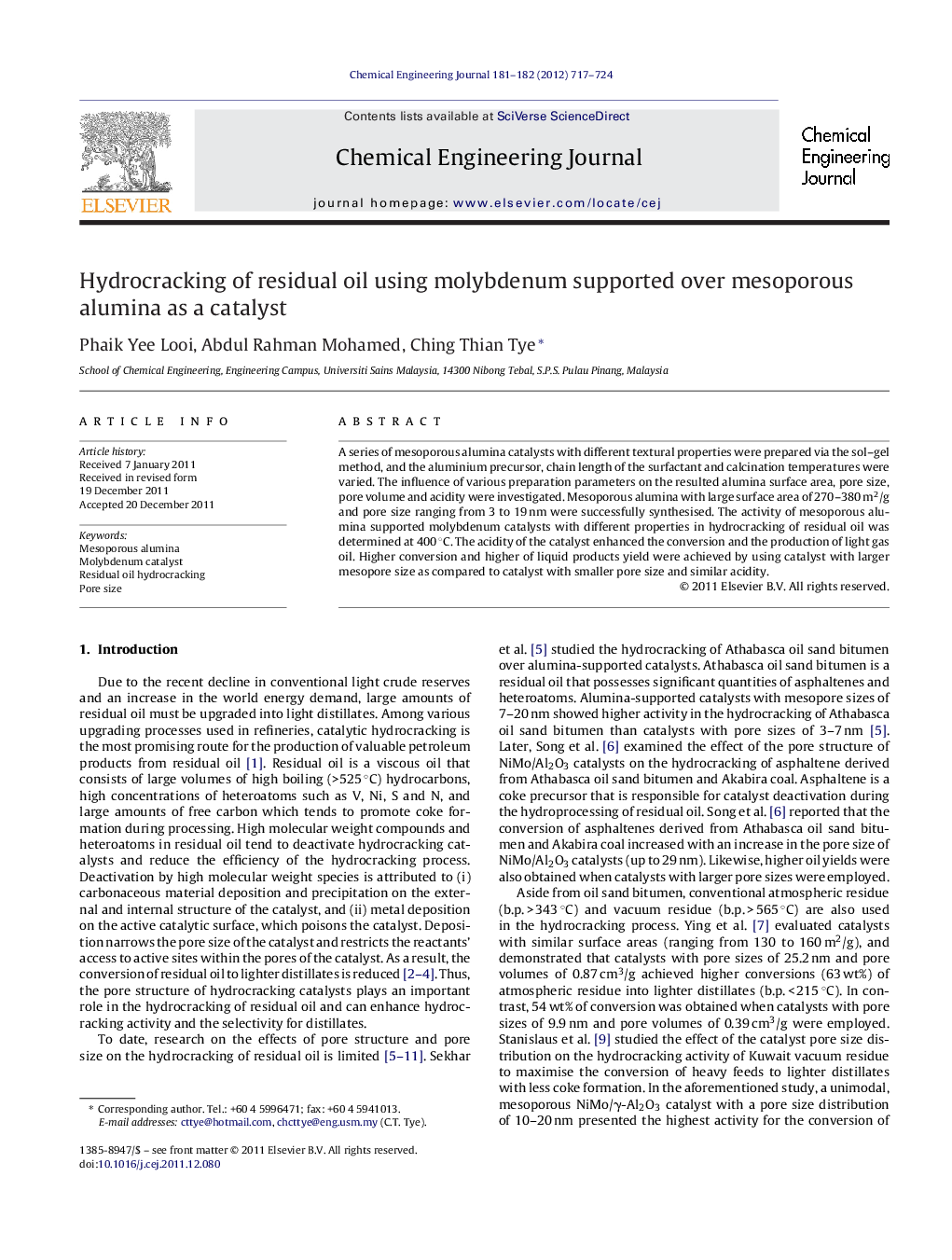| Article ID | Journal | Published Year | Pages | File Type |
|---|---|---|---|---|
| 150255 | Chemical Engineering Journal | 2012 | 8 Pages |
A series of mesoporous alumina catalysts with different textural properties were prepared via the sol–gel method, and the aluminium precursor, chain length of the surfactant and calcination temperatures were varied. The influence of various preparation parameters on the resulted alumina surface area, pore size, pore volume and acidity were investigated. Mesoporous alumina with large surface area of 270–380 m2/g and pore size ranging from 3 to 19 nm were successfully synthesised. The activity of mesoporous alumina supported molybdenum catalysts with different properties in hydrocracking of residual oil was determined at 400 °C. The acidity of the catalyst enhanced the conversion and the production of light gas oil. Higher conversion and higher of liquid products yield were achieved by using catalyst with larger mesopore size as compared to catalyst with smaller pore size and similar acidity.
► Different parameters were adjusted in order to prepare a series of high surface area (>400 cm3/g) mesoporous alumina with different pore diameter size. ► Mesoporous molybdenum catalysts promote high conversion and light liquid product yield. ► The correlation of pore size with the catalyst performance in hydrocracking reaction was investigated. ► Catalysts acidity plays a significant role within the catalyst mesopore range studied.
